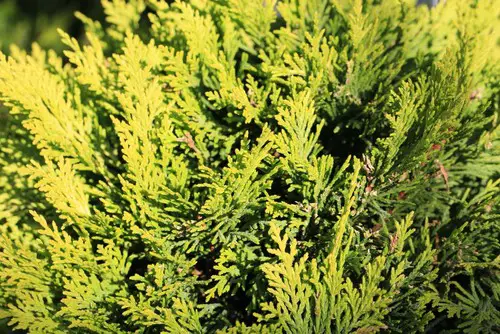Leyland cypress trees are a popular choice for landscaping due to their fast growth rate and evergreen foliage. However, if you notice your Leyland cypress turning yellow, it could be a sign of a problem. Yellowing of the tree’s foliage can be caused by various factors, including environmental stress, disease, or pest infestations.
Understanding the symptoms of yellowing in Leyland cypress trees is crucial to identifying the underlying cause. In most cases, yellowing starts from the tree’s inner foliage and gradually spreads outward.
The needles may also turn brown and fall off, leaving the tree looking sparse and unhealthy. If left untreated, the tree may eventually die, making it essential to take prompt action when you notice any signs of yellowing.
Key Takeaways
- Yellowing of Leyland cypress trees is a common problem caused by various factors, including environmental stress, disease, or pest infestations.
- Identifying the symptoms of yellowing and taking prompt action is crucial to save the tree from dying.
- Proper plant care, effective treatment options, and prevention strategies are essential to maintain the health and beauty of Leyland cypress trees in landscaping.
More on this category:
- Lettuce Leaves Turning Yellow
- Dipladenia Leaves Turning Yellow and Falling Off
- Dipladenia Leaves Turning Yellow
Understanding Leyland Cypress
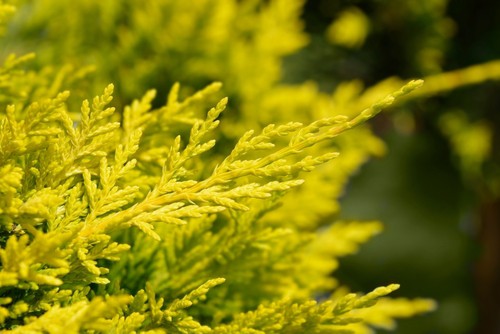
Leyland cypress, also known as Cupressocyparis leylandii, is a fast-growing evergreen conifer tree that is often used as a hedge or screen in landscaping. It is native to North America and is known for its tall, narrow growth habit and dense foliage.
One of the reasons why Leyland cypress is a popular choice for hedges is because it grows quickly, often reaching heights of up to 50 feet in just 20 years. Its dense foliage makes it an excellent choice for privacy screens and windbreaks.
However, Leyland cypress trees can be susceptible to certain diseases, which can cause the foliage to turn yellow. One of the most common diseases that affects Leyland cypress is Phytophthora root rot, which is caused by a fungus that attacks the roots of the tree.
In addition to root rot, Leyland cypress trees can also be affected by other diseases, such as canker, which causes the bark to peel and crack, and needle blight, which causes the needles to turn brown and fall off.
To prevent these diseases from affecting Leyland cypress trees, it is important to maintain proper soil moisture and drainage, avoid planting trees too close together, and prune the trees regularly to promote good air circulation.
Identifying Yellowing Symptoms
Leyland cypress trees are known for their lush green foliage. When the leaves start turning yellow, it is a sign that something is wrong with the tree. Identifying the cause of yellowing leaves is important to address the issue and prevent further damage to the tree.
Yellowing leaves are the most common symptom of a problem with Leyland cypress trees. The yellowing may start at the tips of the branches and gradually spread to the rest of the tree. In some cases, the leaves may turn reddish-brown before falling off.
Yellowing leaves can be caused by a variety of factors. One of the most common causes is chlorosis, which is a condition where the tree is not getting enough iron. This can be caused by poor soil conditions, such as high pH or compacted soil.
Another cause of yellowing leaves is root rot, which is caused by a fungus that attacks the roots of the tree. This can be caused by overwatering or poor drainage.
In some cases, yellowing leaves may be a sign of pest infestation. Mites and aphids are common pests that can cause yellowing leaves. These pests feed on the sap of the tree, which can cause the leaves to turn yellow and eventually fall off.
It is important to identify the cause of yellowing leaves to address the issue and prevent further damage to the tree. If you notice yellowing leaves on your Leyland cypress tree, it is recommended to consult with a professional arborist to diagnose the problem and provide the appropriate treatment.
Leyland Cypress Turning Yellow – 6 Common Problems
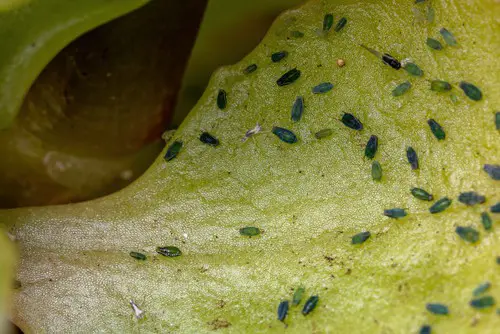
Leyland cypress trees are an evergreen species that are known for their fast growth and dense foliage. However, they can sometimes experience yellowing of their needles, which can be a sign of various problems. Here are some common causes of yellowing in Leyland cypress trees:
- Drought or Dry Conditions: Leyland cypress trees require adequate moisture to thrive and can experience yellowing if they are not receiving enough water. This can be caused by drought or dry conditions, especially in the summer months.
- Root Rot: Root rot is a fungal disease that can affect Leyland cypress trees. It is caused by a variety of fungal pathogens that attack the roots of the tree, leading to yellowing and wilting of the needles. This disease is often caused by poor drainage or overwatering.
- Needle Blight: Needle blight is a fungal disease that can cause yellowing and browning of the needles on Leyland cypress trees. It is caused by the fungus Passalora sequoiae and can be treated with fungicides.
- Canker: Canker is a fungal disease that can cause yellowing and dieback of branches on Leyland cypress trees. It is caused by the fungus Seiridium cardinale and can be treated with fungicides.
- Bagworms: Bagworms are a type of insect that can cause yellowing and defoliation of Leyland cypress trees. They create small bags made of twigs and leaves and can be controlled with insecticides.
- Spider Mites: Spider mites are another type of insect that can cause yellowing of Leyland cypress trees. They feed on the needles, causing them to turn yellow and eventually fall off. They can be controlled with insecticides.
It is important to identify the cause of yellowing in Leyland cypress trees in order to properly treat the problem. If you are unsure of the cause, it may be helpful to consult with a professional arborist or horticulturist.
Role of Environmental Factors
Leyland cypress trees are relatively hardy and can tolerate a wide range of environmental conditions. However, certain factors can cause the trees to turn yellow and lose their vigor. Environmental factors that can affect the health of Leyland cypress trees include:
1. Soil Drainage
Leyland cypress trees prefer well-drained soil. Poorly drained soil can lead to root rot, which can cause the trees to turn yellow and eventually die. It is important to ensure that the soil around the trees is well-drained and does not become waterlogged.
2. Soil pH

Leyland cypress trees prefer slightly acidic soil with a pH between 6.0 and 6.5. Soil that is too alkaline can cause the trees to turn yellow and become stunted. If the soil pH is too high, it may be necessary to amend the soil with sulfur or other acidifying agents.
3. Water
Leyland cypress trees require regular watering, especially during periods of drought. Lack of water can cause the trees to turn yellow and become stressed. However, overwatering can also be a problem, as it can lead to root rot.
4. Humidity
Leyland cypress trees prefer humid environments. Dry air can cause the trees to turn yellow and lose their needles. In areas with low humidity, it may be necessary to mist the trees regularly to keep them healthy.
5. Light
Leyland cypress trees require full sun to thrive. Lack of sunlight can cause the trees to turn yellow and become stunted. If the trees are planted in a shady location, they may need to be pruned to allow more light to reach them.
6. Temperature
Leyland cypress trees prefer warm temperatures. Cold temperatures can cause the trees to turn yellow and become stressed. In areas with cold winters, it may be necessary to protect the trees with a layer of mulch or other protective covering.
Importance of Proper Plant Care
Leyland cypress trees are a popular choice for homeowners and landscapers due to their fast growth rate and ability to provide privacy and shelter from winds. However, these trees are susceptible to yellowing and other issues if they are not properly cared for.
Proper plant care is essential to maintain the health and vitality of Leyland cypress trees.
1. Pruning
Pruning is an important part of Leyland cypress tree care. Regular pruning helps to maintain the tree’s shape and size, and also promotes healthy growth. It is recommended to prune Leyland cypress trees in late winter or early spring before new growth appears.
Pruning should be done selectively, removing only dead, diseased, or damaged branches.
2. Fertilization
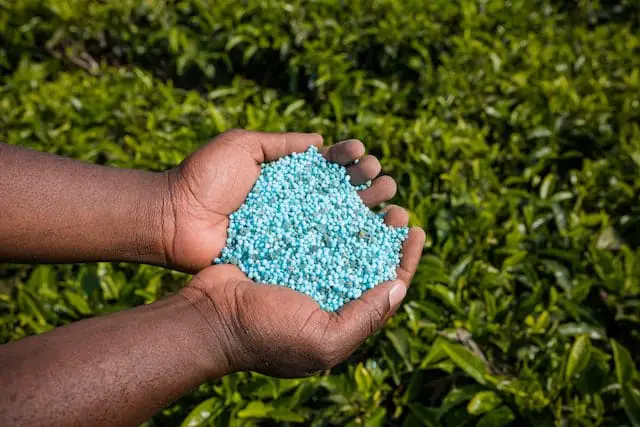
Fertilization is another important aspect of Leyland cypress tree care. These trees require regular fertilization to maintain their health and vigor. It is recommended to fertilize Leyland cypress trees in early spring and again in late summer or early fall.
A balanced fertilizer with equal amounts of nitrogen, phosphorus, and potassium is ideal.
3. Transplanting
Transplanting Leyland cypress trees can be challenging, but it is sometimes necessary if the tree is not thriving in its current location. When transplanting Leyland cypress trees, it is important to choose a well-drained location with plenty of space for the tree to grow.
The tree should be transplanted in the fall or early spring when it is dormant.
4. Mulch
Mulching is an important part of Leyland cypress tree care. A layer of mulch around the base of the tree helps to retain moisture, suppress weeds, and regulate soil temperature. It is recommended to apply a 2- to 3-inch layer of mulch around the base of the tree, taking care not to pile the mulch against the trunk.
5. Irrigation
Proper irrigation is essential to maintain the health of Leyland cypress trees. These trees require regular watering, especially during hot, dry weather. It is recommended to water Leyland cypress trees deeply once or twice a week, depending on soil conditions and weather.
6. Space
Leyland cypress trees require plenty of space to grow. These trees can reach heights of up to 70 feet and widths of up to 20 feet. It is important to plant Leyland cypress trees at least 10 to 15 feet apart to allow for proper growth and development.
7. Sterilization
Sterilization is an important part of Leyland cypress tree care, especially if the tree has been affected by disease or pests. Tools used for pruning or other tree care should be sterilized before and after use to prevent the spread of disease. A solution of one part bleach to nine parts water can be used to sterilize tools.
Effective Treatment Options
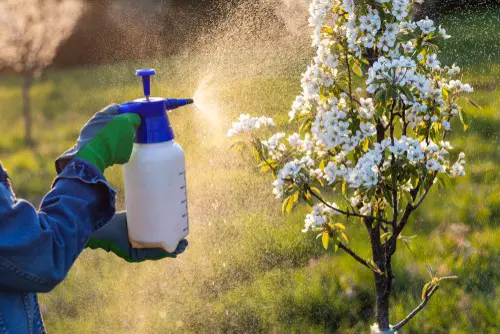
There are several effective treatment options available for Leyland cypress trees that are turning yellow. The choice of treatment depends on the underlying cause of the problem.
1. Fungicide Treatment
If the yellowing is caused by fungal infections, then applying fungicide can be an effective treatment option. Fungicides containing copper or chlorothalonil can be sprayed on the foliage and the trunk of the tree to control fungal infections. It is important to follow the instructions on the label carefully when using fungicides.
2. Insecticide Treatment
If the yellowing is caused by insect infestations, then applying insecticides can be an effective treatment option. Insecticides containing imidacloprid or permethrin can be sprayed on the foliage and the trunk of the tree to control insect pests. Insecticidal soap can also be used to control soft-bodied insects like aphids and spider mites.
3. Biological Control
Biological control methods like releasing ladybugs and predator mites can also be effective in controlling insect pests. Ladybugs feed on aphids and other soft-bodied insects, while predator mites feed on spider mites and other small insects. Releasing these beneficial insects can help control pest populations naturally.
4. Pesticide Treatment
If the yellowing is caused by a combination of fungal infections and insect infestations, then applying a pesticide that contains both fungicide and insecticide can be an effective treatment option. These products are available in both liquid and granular forms and can be applied to the soil around the tree.
Prevention Strategies

To prevent Leyland cypress trees from turning yellow, it is important to take proper care of the trees. Here are some prevention strategies:
- Watering: Leyland cypress trees require regular watering. It is important to ensure that the soil around the tree is moist but not waterlogged. Overwatering can lead to root rot, which can cause the needles to turn yellow and fall off. It is recommended to water the trees deeply once a week during the growing season and reduce watering during the dormant season.
- Air circulation: Good air circulation is important for the health of Leyland cypress trees. Trees that are planted too close together or in areas with poor air circulation are more susceptible to disease and pest problems. It is recommended to plant the trees at least 10 feet apart to allow for good air circulation.
- Shelter: Leyland cypress trees are susceptible to wind damage. Providing shelter from strong winds can help prevent damage to the trees and reduce the risk of yellowing needles. Planting the trees near a building or fence can provide some shelter from the wind.
- Fertile soil: Leyland cypress trees require fertile soil to grow properly. It is recommended to plant the trees in well-draining soil that is rich in organic matter. Adding compost to the soil can help improve its fertility and provide the trees with the nutrients they need to grow.
- Pest control: Leyland cypress trees are susceptible to a variety of pests, including spider mites, bagworms, and scale insects. Regular inspection of the trees can help detect pest problems early and prevent them from causing damage to the trees. It is recommended to use insecticidal soap or horticultural oil to control pests.
- Disease control: Leyland cypress trees are susceptible to a variety of diseases, including canker, root rot, and needle blight. Proper tree care can help prevent these diseases from affecting the trees. It is recommended to avoid over-fertilization, which can lead to excessive growth and weaken the trees. Applying a fungicide can also help prevent disease problems.
- Rainfall: Leyland cypress trees require regular rainfall to grow properly. In areas with low rainfall, it is important to provide supplemental watering to ensure that the trees receive enough water. It is recommended to water the trees deeply once a week during the growing season and reduce watering during the dormant season.
Leyland Cypress in Landscaping
Leyland cypress (Cupressus × leylandii) is a popular evergreen tree that is often used in landscaping. It is valued for its fast growth rate, dense foliage, and ability to provide a natural screen or hedge. However, if you notice that your Leyland cypress trees are turning yellow, it could be a sign of a problem.
1. Diagnosis
Yellowing of Leyland cypress trees can be caused by a variety of factors. One common cause is a lack of water. If the tree is not receiving enough water, the needles will begin to turn yellow and eventually brown. In addition to watering, it is important to make sure the tree is planted in well-draining soil.
Another possible cause of yellowing is a nitrogen deficiency. This can cause the needles to become thin and spindly, with stunted growth and yellowish-green leaves. Adding a nitrogen-rich fertilizer can help to correct this problem.
2. Dieback
Dieback is another issue that can cause Leyland cypress trees to turn yellow. This is a condition where the branches and needles on the tree begin to die off, starting at the tips and working its way back towards the trunk. Dieback can be caused by a variety of factors, including disease, pests, and environmental stress.
3. Cones
Leyland cypress trees also produce cones, which can be a sign of a healthy tree. The cones are small and round, and can be found on the tips of the branches. They are typically green when they first appear, but will turn brown as they mature.
If you notice that your Leyland cypress trees are not producing cones, it could be a sign of a problem.
Frequently Asked Questions
How do you save a dying Leyland cypress tree?
If your Leyland cypress tree is dying, there are a few things you can do to try to save it. First, make sure the tree is getting enough water. Leyland cypress trees need regular watering, especially during hot and dry weather.
You should also check the soil around the tree to make sure it is draining properly. If the soil is waterlogged, you may need to improve drainage by adding organic matter to the soil or using a soil amendment.
Do Leyland cypress need a lot of water?
Yes, Leyland cypress trees need regular watering, especially during hot and dry weather. They prefer moist, well-drained soil, so it’s important to make sure the soil around the tree stays moist but not waterlogged.
Can you overwater a Leyland cypress?
Yes, it’s possible to overwater a Leyland cypress tree. Overwatering can lead to root rot, which can cause the tree to turn yellow and die. It’s important to make sure the soil around the tree is moist but not waterlogged.
What are the signs of root rot in Leyland cypress?
The signs of root rot in Leyland cypress trees include yellowing of the foliage, tip dieback, and root damage. If you suspect your tree has root rot, you should have the affected roots analyzed in a laboratory to determine the cause of the yellowing foliage.
What is the best fertilizer for cypress trees?
The best fertilizer for cypress trees is one that is high in nitrogen and potassium. You can use a general-purpose fertilizer that is specifically formulated for trees and shrubs, or you can use a slow-release fertilizer that will provide nutrients to the tree over a longer period of time.
Why are my cypress trees turning yellow?
Cypress trees can turn yellow for a variety of reasons, including root rot, nutrient deficiencies, insect infestations, and environmental stress. If your cypress trees are turning yellow, it’s important to diagnose the problem and take appropriate action to save the tree.

Hey, I’m Lisa and I’ve been an avid gardener for over 30 years. I love writing, talking and living in the garden! Feel free to connect with me on my socials below

